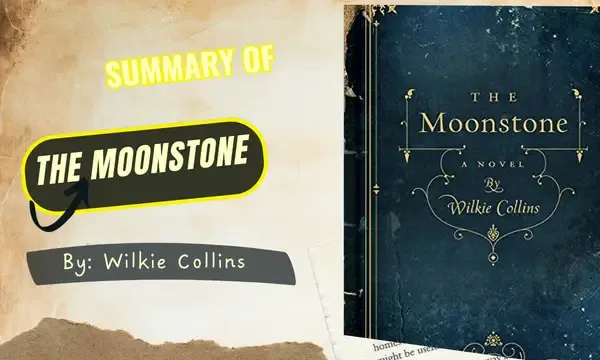Theft and Recovery: "The Moonstone" explores the theft and subsequent attempts to recover a valuable diamond known as the Moonstone, which carries a curse. The novel delves into the complexities of British society in the 19th century, including class distinctions, colonialism, and the role of women.
 |
| Summary of The Moonstone by Wilkie Collins |
The general idea of The Moonstone book
- Narrative Structure: The novel employs multiple narrators, each providing their perspective on events, offering a diverse and often contradictory account.
- Suspense and Mystery: Collins masterfully builds suspense and mystery, keeping readers engaged in the quest to solve the Moonstone's theft and the curse surrounding it.
- Social Commentary: The book provides social commentary on the British Empire, the position of women in society, and the impact of class and colonialism on individuals' lives.
Chapters of The Moonstone book
- "The Storming of Seringapatam (1799)" - The Moonstone is acquired in India during the storming of Seringapatam.
- "The Events Related in Several Narratives" - The narrative structure is introduced, with different characters sharing their accounts.
- "The Night" - The events of the night of the theft are recounted by various witnesses.
- "The First Narrative" - Gabriel Betteredge, the house steward, begins his narrative.
- "The Second Narrative" - Miss Clack, a cousin, shares her perspective on the events.
- "The Third Narrative" - Drusilla Clack's narrative continues.
- "The Fourth Narrative" - Franklin Blake, Rachel's cousin, tells his version of the story.
- "The Fifth Narrative" - Ezra Jennings, a physician, provides his narrative.
- "The Discovery of the Truth" - The mystery begins to unravel as the truth about the Moonstone is revealed.
Conclusions of The Moonstone book
- Complexity of Truth: The novel highlights that truth can be elusive and subjective, as various narrators provide differing accounts of the same events.
- Impact of Colonization: It explores the consequences of British colonialism and the exploitation of other cultures, symbolized by the Moonstone's origins in India.
- Gender Roles: "The Moonstone" challenges traditional gender roles, with female characters like Rachel Verinder and Miss Clack defying societal expectations.
About the author of The Moonstone
Wilkie Collins was a prominent 19th-century English novelist and playwright, known for his contributions to the mystery and detective fiction genres. His experience in writing suspenseful and intricate narratives is evident in "The Moonstone."
The Moonstone book in relation to other books
"The Moonstone" is often compared to works by Charles Dickens and Edgar Allan Poe due to its focus on social issues and the use of suspense as a literary device. It is considered one of the earliest examples of detective fiction.
The Moonstone book audience
The novel appeals to readers who enjoy mystery, suspense, and social commentary. It also engages those interested in Victorian literature and its exploration of social norms.
Reception or Critical Response to the Book
"The Moonstone" received critical acclaim upon its publication in 1868. It is praised for its innovative narrative structure and its influence on the detective fiction genre.
The date of publication of The Moonstone book
Publisher: Tinsley Brothers
First published: 1868
Recommendations for other books
If you enjoyed "The Moonstone," you might also like:
The Woman in White by Wilkie Collins - Another classic mystery novel by the same author.
- "The Adventures of Sherlock Holmes" by Arthur Conan Doyle - A renowned collection of detective stories.
- Great Expectations by Charles Dickens - A classic Victorian novel with a strong narrative and social commentary.
